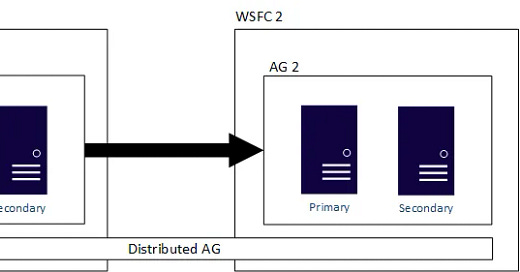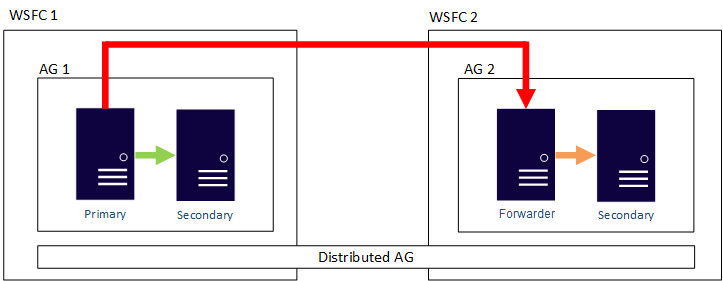A distributed availability group is a special type of availability group that spans two separate availability groups. The availability groups that participate in a distributed availability group don't need to be in the same location. They can be physical, virtual, on-premises, in the public cloud, or anywhere that supports an availability group deployment. This includes cross-domain and even cross-platform - such as between an availability group hosted on Linux and one hosted on Windows. As long as two availability groups can communicate, you can configure a distributed availability group with them
A distributed availability group requires that the underlying availability groups have a listener. Rather than provide the underlying server name for a standalone instance (or in the case of a SQL Server failover cluster instance [FCI], the value associated with the network name resource) as you would with a traditional availability group, you specify the configured listener for the distributed availability group with the parameter ENDPOINT_URL when you create it. Although each underlying availability group of the distributed availability group has a listener, a distributed availability group has no listener
The following figure shows a high-level view of a distributed availability group that spans two availability groups (AG 1 and AG 2), each configured on its own WSFC. The distributed availability group has a total of four replicas, with two in each availability group.
We can configure the data movement in distributed availability groups as synchronous or asynchronous. However, data movement is slightly different within distributed availability groups compared to a traditional availability group. Although each availability group has a primary replica, there is only one copy of the databases participating in a distributed availability group that can accept inserts, updates, and deletions. As shown in the following figure, AG 1 is the primary availability group. Its primary replica sends transactions to both the secondary replicas of AG 1 and the primary replica of AG 2.
The primary replica of AG 2 is also known as a forwarder. A forwarder is a primary replica in a secondary availability group in a distributed availability group. The forwarder receives transactions from the primary replica in the primary availability group and forwards them to the secondary replicas in its own availability group. The forwarder then keeps the secondary replicas of AG 2 updated.
The only way to make AG 2's primary replica accept inserts, updates, and deletions, is to manually fail over the distributed availability group from AG 1




